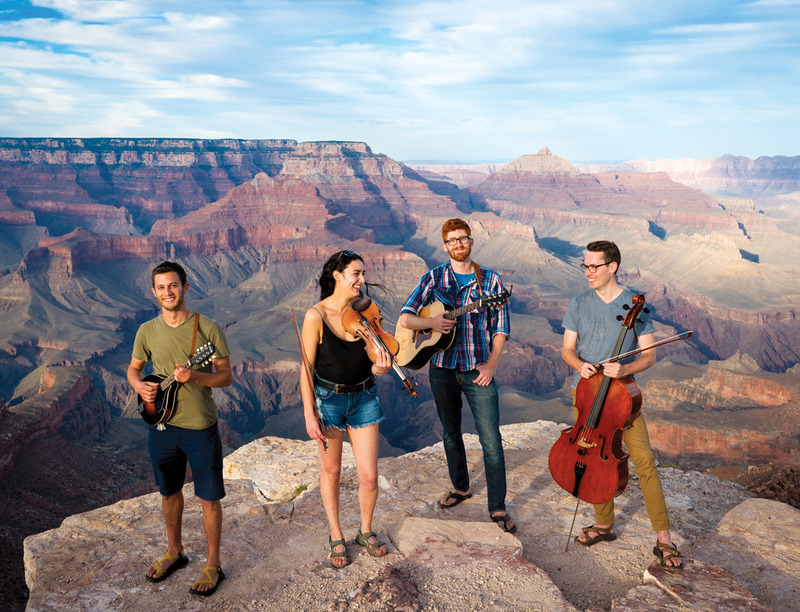The Local newsletter is your free, daily guide to life in Colorado. For locals, by locals.
Ben Barron wasn’t content with simply exploring a park to celebrate the National Park Service’s centennial last year. The 26-year-old Boulderite and his band, the Infamous Flapjack Affair (IFA, pictured), had a more ambitious plan. Step one: Travel along the Colorado River and talk to people whose lives have been shaped by the powerful waterway. Step two: Write songs based on those interviews and play the tunes in national parks. Step three: Release an album made up partly of the music. When it’s released on August 11, Confluence will become the flagship project of the Widewater Institute, a nonprofit that helps artists create a social or environmental impact. We delved into how IFA did just that.

Yampa Valley
“If nothing else, as you go / As you make your way / hear this: / Go and light up the world” from “Wide Water”
Inspiration: Yampa Valley residents, such as ranchers Kyle and Tyra Monger
Their Story: After chasing an acting career in Hollywood, Kyle came back to Colorado to help his sister, Tyra, maintain the ranch that has been in their family for decades. “Even though their mother insisted that her children pursue their interests and passions wherever that would take them, the next generation has gravitated back to the ranch, fostering a deep love of and care for the land, despite a challenging economic backdrop,” IFA guitarist David Carmel says.

Bears Ears
“No black or white / All bends to gray” from “Wide Water”
Inspiration: Pete Sands, a country singer and member of the Navajo tribe
His Story: Sands grew up in Utah’s Bears Ears region, which former President Barack Obama named a national monument—a status that might be revoked now that President Donald Trump has ordered a review of 27 of them. Sands’ community has opinions on both sides of the argument and sees the conflict as the definition of a gray area. “That mindset is so apt for finding understanding in today’s divided political environment,” IFA cellist James Mitchell says.
Grand Canyon National Park
When you can read the lines of the land / This place is a classroom with lessons to teach / I am small but also empowered / Raised by wonder to listen and reach from “Canyon Wren”
Inspiration: Amala Posey, a ranger with the National Park Service
Her Story: Posey, who focuses on youth engagement within Grand Canyon National Park, sees the canyon as not only a wondrous landscape but also an educational tool. “She’s clearly found the thing she loves and devoted her career so far to helping protect that beautiful and complex place,” says Sarah Noyce, IFA’s lead singer and fiddler.

Grand Canyon National Park
She is the spine / She is the blood / With waters red and blue and green / She washes away the mud / She knows the pain of a mother / She bears the weight of the real / She knows we have power / To hurt but also to heal from “Spine”
Inspiration: Dianna Uqualla, a medicine woman with the Havasupai tribe
Her Story: The Havasupai people were forcibly moved from their land to make room for Arizona’s Grand Canyon National Park in 1919. “It was a horribly traumatic thing, and the scar tissue is still there,” Barron says. “But Dianna just moves forward and focuses on simple shared human qualities like compassion and gratitude. That bowled me over.”









